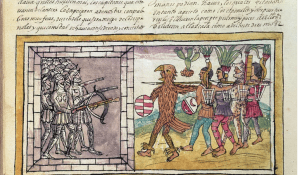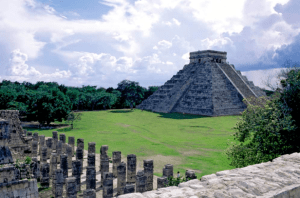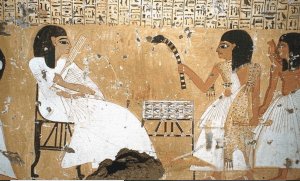(History) What Really Happened to the Mayans Civilization when the Spanish Came
(History) What Really Happened to the Mayans Civilization when the Spanish Came
In This Review
The Maya Empire, centered in the lowlands of the tropical jungle that are today Guatemala was at the height of its influence and power in the 6th century A.D. The Maya excelled in pottery, agriculture, hieroglyphic writing math, calendar-making, and agriculture as well as leaving an incredible amount of magnificent architectural and symbolic art. The majority of the major Stone cities in the Maya were abandoned around A.D. 900, however they were not completely demolished until the 19th century, scholars have debated about what could be behind this sudden decline.
110-Year-Old Man who Found Alaba Internal Market International, Nze Igwe Okoro

Locating the Maya
Did you even know? among the earliest Maya one language was spoken however, in the Preclassic Period a great linguistic diversity was created among the many Maya peoples. Today, in Mexico as well as Central America, around 5 million people speak around 70 Maya languages. The majority of them speak Spanish.
It is believed that the Maya civilization was among the most powerful Indigenous society in Mesoamerica (a phrase used to refer to Mexico in the region of Central America before the 16th century Spanish conquer). In contrast to other scattered Indigenous groups of Mesoamerica The Maya were concentrated in a single geographic block that covered entire Yucatan Peninsula and modern-day Guatemala; Belize and parts of the Mexican states of Tabasco and Chiapas and the western region of Honduras and El Salvador. This clustering proved that the Maya were relatively safe from attacks by the other Mesoamerican peoples.
Eritrea and Ethiopia War Closure
In that vast area of land, it is believed that the Maya resided in three distinct sub-regions, each with its own distinct cultural and environmental differences The northern Maya lowlands of the Yucatan Peninsula; the southern lowlands that are located in the Peten district in northern Guatemala and adjoining parts that comprise Mexico, Belize and western Honduras as well as in the south, there are Maya highlands, located in the region of mountains in southern Guatemala. Most notable is Maya from the Maya in the Southern lowland region reached their zenith in their peak during the Classic Period of Maya civilization (A.D. 250-900) and constructed the magnificent monuments and stone cities which have intrigued explorers as well as experts from the region.
Early Maya, 1800 B.C. until A.D. 250
The oldest Maya settlements date back to the year 1800 B.C., or the beginning of what’s known as the Preclassic or Formative period. The early Maya were agricultural, cultivating crops like corn (maize) as well as squash, beans, as well as cassava (manioc). In the Middle Preclassic Period, which ran from about 300 B.C., Maya farmers started to increase their numbers both in the lowland and highland regions. In the Middle Preclassic Period also saw the development of the first significant Mesoamerican civilization known as the Olmecs. As with other Mesamerican peoples such as those of the Zapotec, Totonac, Teotihuacan and Aztec The Maya took a lot of cultural and religious traits, as also their numbers system and their famous calendar from the Olmec.
A New Independent Nation Might Suffer These Challenges
Alongside agriculture In addition to agriculture, Preclassic Maya was also known for its agriculture. Preclassic Maya also displayed more advanced characteristics of culture, such as pyramid building cities, construction of city structures and the inscription of stone monuments.
It is believed that the Late Preclassic city of Mirador located in northern region of Peten region, was among the largest cities that were constructed during the Pre-Columbian Americas. The size of the city was greater than that of that of the Classic Maya capital of Tikal and its presence is proof that the Maya thrived long before even the Classic Period.

Cities of Stone: The Classic Maya, A.D. 250-900
The Classic Period, which began at A.D. 250, was the peak of the Maya Empire. The Classic Maya civilization expanded to around 40 cities, which included Tikal, Uaxactun, Copan, Bonampak, Dos Pilas, Calakmul, Palenque and Rio Bec; each city was home to between 5,000 and 50,000 inhabitants. At its height it was believed that the Maya population could have reached 2,000,000 or more than 10 million.
Excavating of Maya sites have revealed temples, plazas, palaces and pyramids as well being courts used to play the well-known Maya ball game ulama. each one of which is significant for Maya culture. Maya city centers were protected by and was populated by a large number of farmers. Although the Maya were a primitive breed of “slash-and-burn” agriculture, they also showed evidence of more sophisticated methods of agriculture, including irrigation and the terracing.
The Maya were extremely religious and worshiped a variety of gods linked to nature, like Gods associated with the sun, moon and the rain, as well as corn. The highest rank in Maya life were the kingdoms, also known as “kuhul ajaw” holy lords whom they believed were connected to gods and had the tradition of a lineage that was hereditary. They were believed to act as mediators between gods and the people of earth and were the ones who were the ones to perform the elaborate rituals and religious ceremonies which were essential to Maya culture.
List of Nations Who Broke Out of Their Original Colonies
Maya Arts and Culture
The Classic Maya built many of their palaces and temples in the shape of a pyramid embellished with elaborate reliefs and the inscriptions. These structures have been able to earn the Maya their status as the most renowned artist of Mesoamerica. With their religious practices as their guide and rituals, the Maya also made important advances in astronomy and mathematics which included the use of the zero as well as the creation of intricate calendars such as Calendar Round, which is a Calendar Round, based on calendars with 365 days and, later the Long Count Calendar, designed to last more than 5,000 years.
The first serious exploration of Classic Maya sites began in the 1830s. In the mid- to late 20th century, only a tiny part of their hieroglyphic writing had been decoded, and more information about their culture and history became well-known. Much of what we know about the Maya is derived from the remains of their art and architecture that includes stone carvings as well as inscriptions on their monuments and buildings. The Maya also produced paper from tree bark and wrote on books made of this paper known as codices. Four of these codices are found to survive. They also are believed to have been responsible for some of the earliest use of rubber and chocolate.

Life in the Rainforest
One of the most fascinating aspects of Maya culture Maya was their capacity to create a massive civilization in the tropical rainforest. In the past, people of ancient times had thrived in climates with less rainfall and central control of water resources via irrigation and other methods were the basis of the society. This was the case with the Teotihuacan of the highlands of Mexico and their contemporaries from that of the Classic Maya. It was in the south of Maya lowlands however, there were a few navigable rivers that could be used for transport and trade in addition to the absence of any need for irrigation systems.
In the last decade of the 20th century, scientists had concluded that the lowlands’ climate was actually quite varied. Although foreigners were dissatisfied with the absence of gold and silver The Maya profited from the abundance of natural resources in the area such as limestone used for construction and obsidian, a volcanic rock, to make weapons and tools, and salt. The area also contained additional treasures for the Maya such as quetzal feathers, jade used to embellish the elaborate costumes worn by Maya nobility , and marine shells that served as trumpets during ceremonies and in war.
Mysterious Decline of the Maya
From the end of the eighth century to the close in the 9th century something unimaginable happened that shook the Maya civilization to its very foundations. In a series of events it was the Classic cities of the southern lowlands vanished and in A.D. 900, Maya civilization in the region was eroding. The reason behind the mysterious decline is not known although scholars have proposed various theories.
The Different Factions Of IPOB Insurgents Tormenting Nigeria’s Southeast
There is a belief that in the ninth century, the Maya had depleted the ecosystem surrounding their territory to the point where they were unable to sustain an extremely large number of people. Others Maya experts believe that the constant battles between city-states that were competing led the complex military family by marriage as well as trade alliances among them to fall apart and the dynastic system that was traditionally used to exercise power. The stature that the Holy Lords had declined and their elaborate ceremonies and rituals dissolved into chaos. In the end, a devastating environmental changes-like an extremely prolonged, severe period of drought might have destroyed this Classic Maya civilization. Drought would have hit cities like Tikal-where rainwater was necessary for drinking as well as for crop irrigation-especially hard.
All three of these factors-overpopulation and overuse of the land, endemic warfare and drought-may have played a part in the downfall of the Maya in the southern lowlands. Within the higher regions of Yucatan there were a few Maya cities, such as Chichen Itza, Uxmal and Mayapan-remained flourishing during The Post-Classic Period A.D. 900-1500. When the Spanish invaders arrived the majority of Maya were living in agriculture villages, with their magnificent cities submerged beneath an overgrowth of green rainforest.

